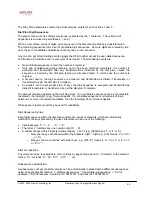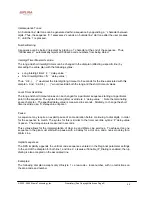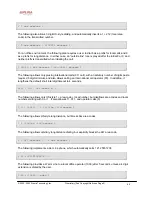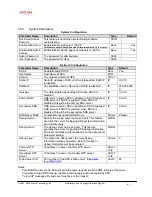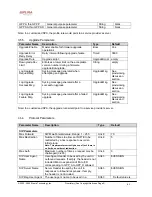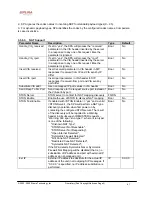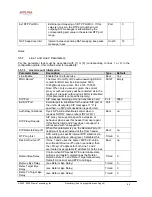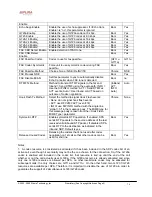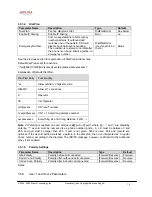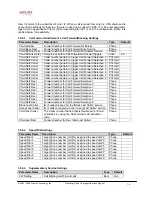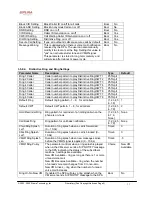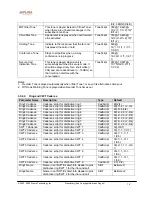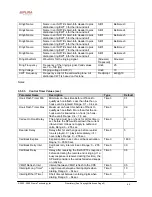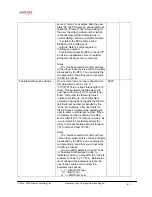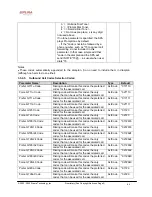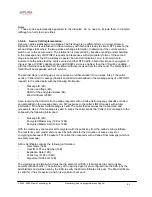
© 2003 - 2005 Sipura Technology, Inc
Proprietary (See Copyright Notice on Page 2)
72
• The remote party must indicate that it can receive audio while holding MOH to work. That is the SIP
2xx response from the remote party in reply to the re-INVITE from the SPA to put the call on hold
must have the SDP indicate a sendrecv or recvonly attribute and the remote destination address and
port must not be 0
3
.
Restrict Source IP Notes:
If configured, the SPA will drop all packets sent to its SIP Ports originated from an untrusted IP
address. A source IP address is untrusted if it does not match any of the IP addresses resolved from
the configured <Proxy> (or <Outbound Proxy> if <Use Outbound Proxy> is "yes"). Additionally:
•
If <Proxy> (or <Outbound Proxy>)is an IP address, then only this IP is trusted
•
All messages, regardless inside-dialog or outside-dialog, requests or responses, are dropped if they
came from untrusted IP addresses. Hence direct peer-to-peer signaling cannot be used within a
dialog if this option is on. So proxy must include Record-Route or act as B2BUA, or set <Use OB
Proxy in Dlg> to "yes" to force all in-dialog messages to route through the proxy.
•
If this option is enabled, Line 1/2 MUST use a different <SIP Port> value. Otherwise the restriction
will not be applied correctly.
4. SAS Notes:
• Either or both of lines 1 and 2 can be configured as an SAS server.
• Each server can maintain up to 5 simultaneous calls. If the second line on the SPA is disabled, then
the SAS line can maintain up to 10 simultaneous calls. Further incoming calls will receive a busy
signal (SIP 486 Response).
• The streaming audio source must be off-hook for the streaming to occur. Otherwise incoming calls
will get a error response (SIP 503 Response). The SAS line will not ring for incoming calls even if the
attached equipment is on-hook
• If no calls are in session, battery is removed from tip-and-ring of the FXS port. Some audio source
devices have an LED to indicate the battery status. This can be used as a visual indication whether
any audio streaming is in progress.
• IVR can still be used on an SAS line, but the user needs to follow some simple steps: a) Connect a
phone to the port and make sure the phone is on-hook, b) power on the SPA and c) pick up handset
and press * * * * to invoke IVR in the usual way. The idea behind this is that if the SPA boots up and
finds that the SAS line is on-hook, it will not remove battery from the line so that IVR may be used.
But if the SPA boots up and finds that the SAS line is off-hook, it will remove battery from the line
since no audio session is in progress.
• Set up the Proxy and Subscriber Information for the SAS Line as you normally would with a regular
user account.
• Call Forwarding, Call Screening, Call Blocking, DND, and Caller-ID Delivery features are not
available on an SAS line.
3.5.7.2. Supplementary Services Enable
The SPA provides native support of a large set of enhanced or supplementary services. All of these
services are optional. The parameters listed in the following table are used to enable or disable a
specific supplementary service. A supplementary service should be disabled if a) the user has not
subscribed for it, or b) the Service Provider intends to support similar service using other means than
relying on the SPA.
Parameter Name
Description
Type
Default
Call Waiting Serv
Enable Call Waiting Service
Bool
Yes

